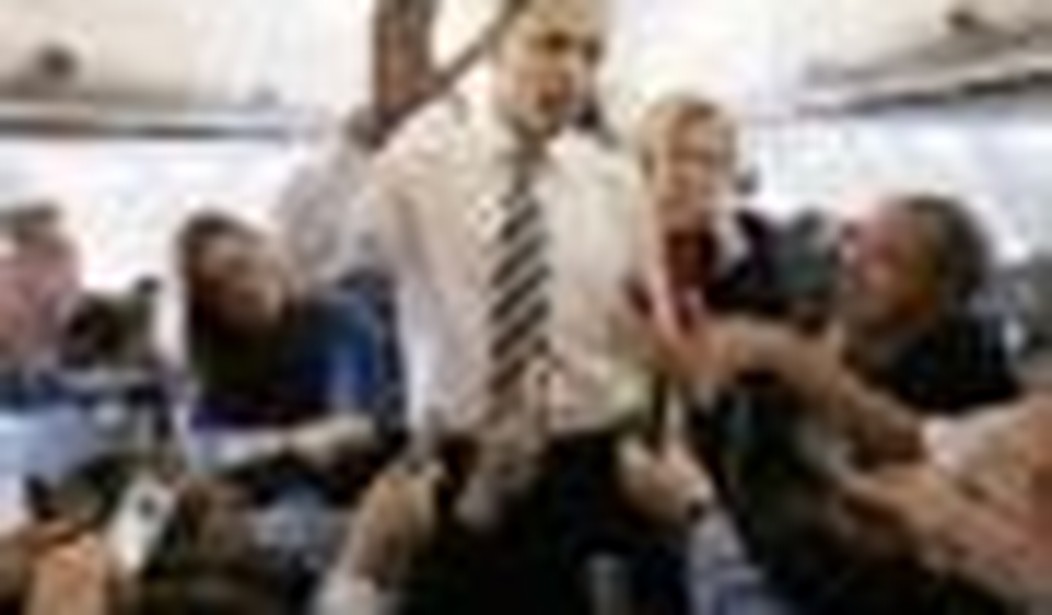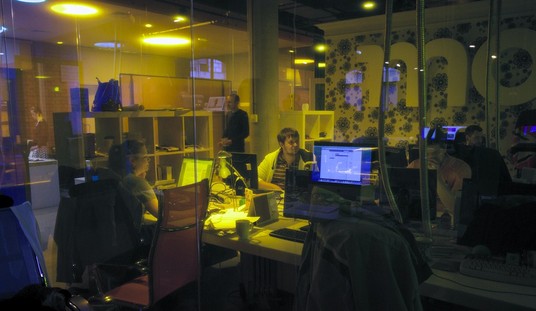On the eve of the killing of Osama bin Laden, President Obama was being criticized by his base as “leading from behind.” In a matter of hours, the president went from being an ineffectual leader to being roundly called “courageous” for authorizing a military operation on which no modern president would have demurred.
In his announcement to the nation of bin Laden’s death, President Obama made it appear that killing or capturing Osama bin Laden had been a top priority of his administration since day one, and he choose to remind us how bin Laden had, under the previous administration, escaped over the Afghan border into Pakistan. Not once did the president acknowledge that the previous administration had put into place a counter-terrorism team to hunt down bin Laden.
Ever sensitive to the 2012 campaign, the media jumped on the killing of bin Laden with the words “game changer” to describe Obama’s “courageous” decision and his transformation from being indecisive to being a leader. It began to sound like Obama himself had jumped out of a helicopter with an M-16 and charged into bin Laden’s fortified compound.
The problem is that a sycophantic media that was so consumed with seeing the ascension of Obama to the presidency never wanted to find out who he is. Obama, unlike other candidates, was permitted to craft his own image. And much of this came from his veneration of self as portrayed in two hagiographies possessing all the objectivity of a medieval church tome on the saints.
In the past several weeks, the consequences of the media’s purposeful apathy have come home to roost. On April 19, 2011, there was the sight of the president giving a tongue lashing to a Houston reporter who wasn’t buying into playing Larry King to the president. Admonishing the reporter to let him finish his answers next time, as if there would be one, our calm, collected, dispassionate, and open president was miffed because he was forced into playing hardball, a game from which the media had largely exempted him. Anyone who watched the interview knew that the president had been permitted to answer the questions. He just didn’t like what he was being asked.
Then came the president’s April 20 trip to San Francisco. The pool of reporters was restricted to pad and pencil types. No cameras, no recording equipment. Among the assembled reporters was Carla Marinucci, from the liberal San Francisco Chronicle.
Marinucci used her cell phone to captured a protest at the upscale-breakfast fundraiser at San Francisco’s posh St. Regis Hotel. Local activist Naomi Pitcairn shelled out $76,000 so she and her outraged fellow progressives could spontaneously serenade the president with a ditty on behalf of Private Bradley Manning, the alleged Wikileaks source.
After filing her pool report, Marinucci uploaded a video to the Chronicle’s web site, SFGate.com, of the a capella serenade, capturing an unflattering image of a stunned president incurring the wrath of his ideological base.
The White House Press Office issued a heated warning that Marinucci would no longer be permitted to cover the president and if the Chronicle’s editors went public with this story, they and their parent Hearst-chain reporters would be banished from all presidential coverage.
Even for the Obama-allied Chronicle, this heavy-handed outburst was too much. Phil Bronstein, the Chronicle’s editor, posted the story on SFGate.com, and the White House communications office immediately issued a denial, which Bronstein followed up by unflinchingly calling them a bunch of liars.
Such heavy handedness ensues from the continued expectation that the hands-off media approach to Obama is now the norm. This implicit policy dramatically characterized coverage of Obama during the 2008 campaign.
Obama’s ties to Tony Rezko, the Chicago Combine, and various pay-to-play schemes in securing medical facility permits escaped the notice of investigative journalists. When Obama responded to a question from Diane Sawyer about his relationship with then-accused (and subsequently convicted) felon Rezko, saying he barely knew the man who contributed $250,000 to his three campaigns, there was no dogged pursuit of an obvious lie. Obama’s acquisition of his Hyde Park mansion, thanks to the largess of Mrs. Rezko, would, by itself, have been a major scandal for any other candidate.
In 1972, Robert Boyd and Clark Hoyt relentlessly pursued the story of vice presidential candidate Thomas Eagleton’s mental illness, which led to Eagleton’s withdrawal from the McGovern campaign. Boyd and Hoyt had a scoop, but their patriotic sensibilities exceeded their need for adulation. They brought their story to McGovern before they made it public, and when they brought it to the campaign, everyone else got it. Their Pulitzer Prize (1973) was for a story initially withheld but strongly pursued.
How different the media’s approach to Obama has been. Even the issue of Obama’s mentor, the Reverend Jeremiah Wright, whose hatred of America should easily have been a major story, was largely ignored until the ever-garrulous Wright kept pushing the rhetorical envelope of rage and forced the issue.
Journalist Stanley Kurtz pursued the relationship between Obama and terrorist Bill Ayers. When Kurtz asked for the University of Illinois’ records of the Chicago Annenberg committee on which both Ayers and Barack Obama worked, the university, a public institution, denied Kurtz access to public records. This should have outraged the media, but the story gained no traction.
Kurtz learned that not only did Obama and Ayers work closely on the Chicago Annenberg Challenge, but they also worked together on other committees. Obama launched his campaign for the Illinois Senate in the living room of Ayers and wife Bernadine Dohrn. Still, the relationship between the Democratic candidate for the presidency and two unrepentant terrorists was not considered news. Obama’s dismissive comment that Ayers was “just a guy from the neighborhood” whom he barely knew was accepted at face value.
What appears to have breached the levee the media so carefully constructed around the Obama myth was Obama’s vacillation in protecting the insurgents in Libya. The right to protect, R2P, of which foreign policy advisor Samantha Power is a major proponent, has become a cause celebre for the left.
While still salivating over the prospect of bringing President George W. Bush and Vice President Richard Cheney to The Hague on war crimes charges, the hypocritical left has no problem with Obama launching missiles into Gaddafi’s Tripoli compound. Starting a third Middle East war where America’s national security interests conspicuously evade definition does not seem to be a problem, even for those who once embraced the now near-defunct anti-war movement.
“Leading from behind” became the mocking refrain of the left intelligentsia. Suddenly, Obama was no longer the strong competent leader, the messiah who would usher in a new age of diplomacy, but a hesitant politician who yielded command and control causing the flowering Arab spring to wilt.
The media now found it had an indecisive, petulant, thin-skinned, anti-hero on their hands.They argued that this is a different Barack Obama. This is not the Barack Obama of 2008. Then, just as quickly as they had scorned Obama, the media rediscovered their messiah in the aftermath of the execution of Osama bin Laden.
One wonders how they could possibly know who Obama is. In 2008, they reified Obama through his own abstract and deceptive presentation of self. Subsequently they have gone from scorning him to re-embracing him. Throughout, they have abrogated their journalistic responsibility and have caused an appropriate loss of confidence in their profession.









Join the conversation as a VIP Member